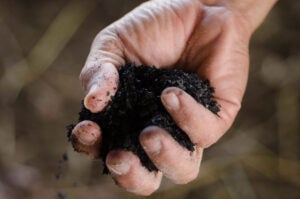One of the biggest challenges that farmers face is pest management. Addressing insects, disease, and other problems are vital to having successful yields, financial sustainability, and global food security. One way that farmers solve these problems is through the use of pesticides, which is the overarching term for herbicides, insecticides, nematicides, fungicides, and other natural or synthetic chemicals that are used to protect crops against pests and disease.
But what if a farmer doesn’t want to use pesticides? Is there an alternative?
Good news! Yes, there are some alternatives that many farmers will use before turning to pesticides. One of those is called Integrated Pest Management. IPM is an effective and environmentally conscious approach to pest management. IPM is not a single method of pest control — instead, it is a series of things that include evaluating the pests, making decisions about when and how to take action, and then the actual pest control.
Basically every farmer is constantly monitoring for pests and disease. There are often huge issues if a disease or pest is allowed to take over a field or a crop. So all pest management starts with monitoring and checking for problems. After a pest is identified, producers start making decisions about what to do. One insect in a field doesn’t automatically mean that there is a problem, but it could be a sign that the farmer needs to keep an eye on the situation.
Once concern grows about insects or disease, it’s time to take more action. In an IPM system, less risky pest controls are chosen first. This includes highly targeted chemicals, such as pheromones to disrupt pest mating, or mechanical control, such as trapping or weeding. If it turns out that these control methods aren’t working, the next step would be the targeted spraying of pesticides. The last resort in IPM is broadcast spraying of non-specific pesticides, which affect an entire field.
IPM is essentially a continuum. All producers use it to an extent, starting with the first steps of monitoring and evaluating. Everyone who manages pests falls somewhere on the continuum of IPM. IPM is also something that can be implemented at a small scale, such as in a garden.
But there are specific tactics for pest control out there, too.
One emerging method of weed control is called flame weeding. Flame weeding is the use of intense heat, usually produced by a propane torch or other fuel-burning device, to kill weeds. Flame weeding is most effective on smaller plants and is non-selective, which means that it will affect any plants exposed to the flame. This is best used in open areas where desirable plants aren’t growing, so it can be used before planting. This method of weed control is not widely used and is most often employed by smaller operations and home gardeners.
Prevention is another big part of pest and disease management. Doing things that improve soil health is one example. Using crop rotations can prevent pests and diseases from accumulating in the soil. Planting crops that are genetically modified to be more disease resistant or repel pests is another great prevention method.

Another option that uses minimal pesticides is planting treated seeds. Treated seeds have been lightly coated with various fungicides, insecticides, nematicides, and other biological products. Since the treatments are applied directly to the seed, the amount of treatment used is minimal. This means there is a reduced possibility of runoff and water-quality declines when compared to with pesticide sprays.
Biopesticides are a growing alternative to synthetic pesticides. Biopesticides are certain types of pesticides derived from such natural materials as animals, plants, bacteria, and certain minerals. Biochemical pesticides are naturally occurring substances that control pests by non-toxic mechanisms. One example is that instead of simply killing insects, some biopesticides interfere with the mating of that type of insect.
This technology is still emerging and shows some promise in being more environmentally beneficial than alternatives, but more research is needed. Biopesticides also have short shelf lives, so there are problems to be worked out before the use is more widely spread.

Inter-row cultivation is another great way to manage weeds. In inter-row cultivation, a row cultivator tills the soil and uproots weeds in between rows. The machine used for cultivation matches the configuration of the seeding machine used to plant that field. When soil conditions are good, 70 percent to 80 percent of the weeds between the rows can be removed by single-row cultivation. With fewer weeds in the field, the need for herbicides is reduced.
There are tons of other alternatives to pesticides that aren’t even mentioned here. Following Integrated Pest Management procedures and practices is a great way to manage the need for pesticide use. This is something that all farmers use to some extent. There are also emerging technologies, like flame weeding and biopesticides. Prevention of problems by using treated seeds, inter-row cultivation, crop rotations, and using genetically modified crops are other great options.
Each and every farm has processes for handling pesticides and their alternatives and each farm decides what works best for them.
Michelle Miller, the Farm Babe, is a farmer, public speaker, and writer who has worked for years with row crops, beef cattle, and sheep. She believes education is key in bridging the gap between farmers and consumers.



